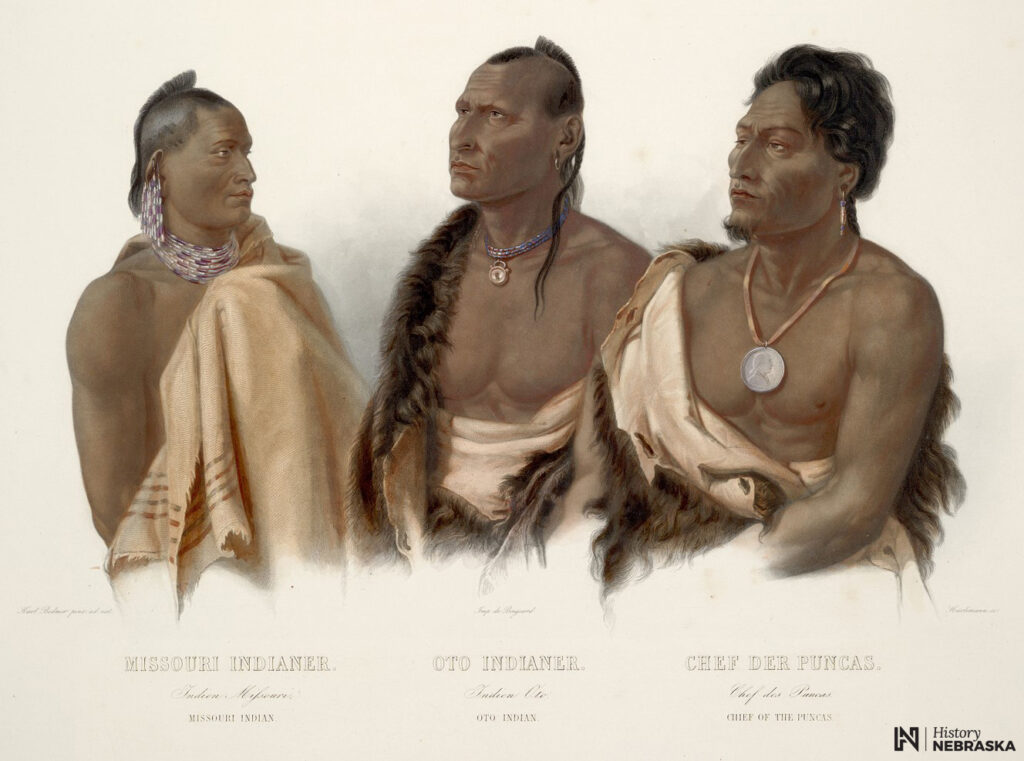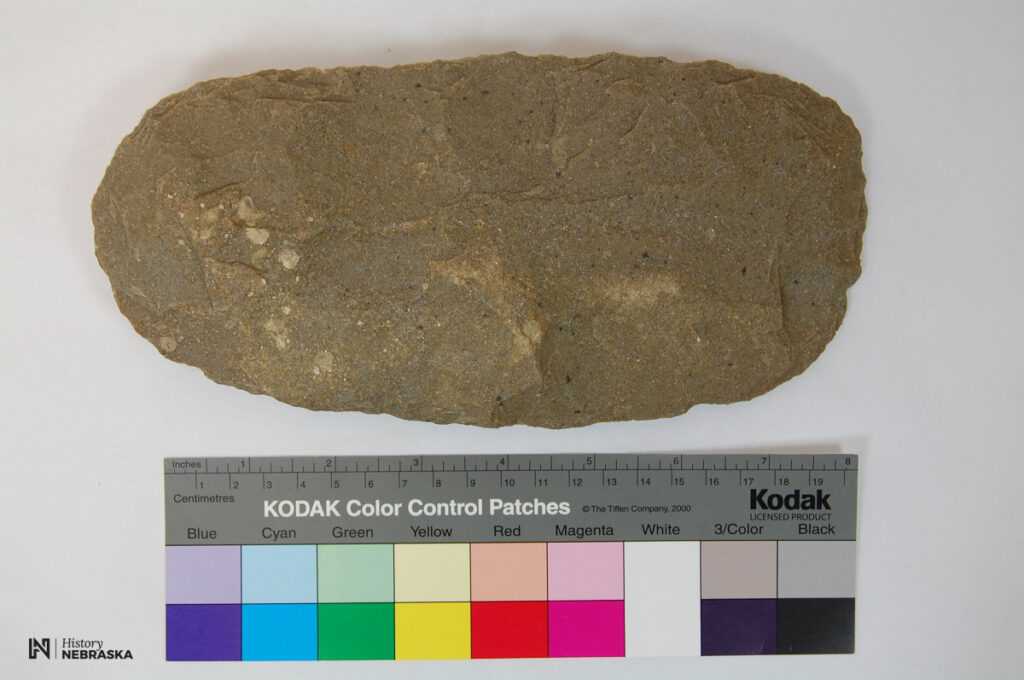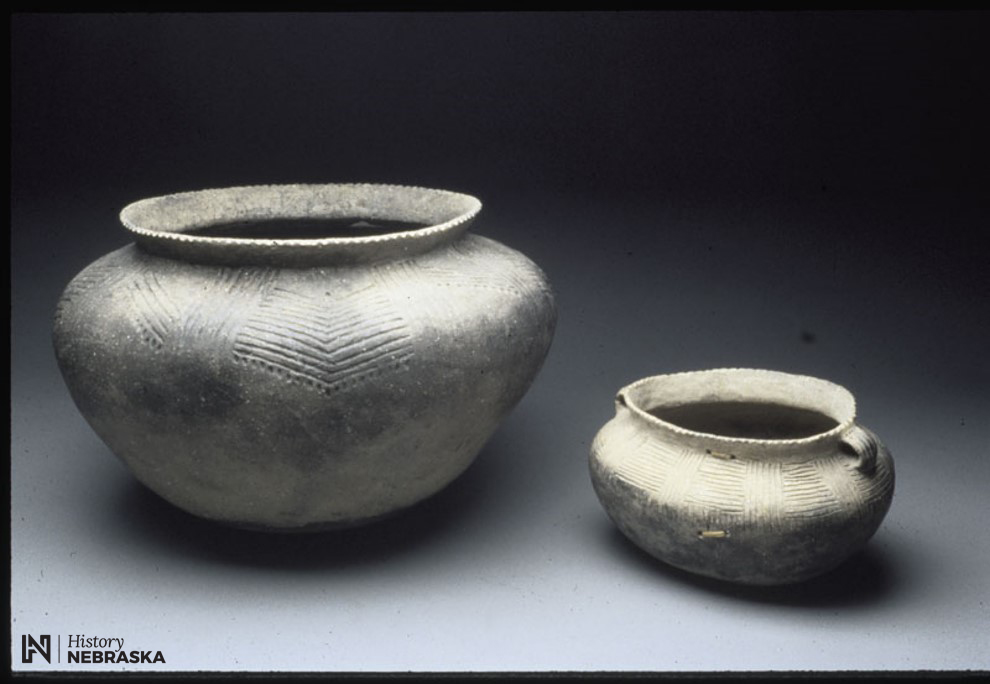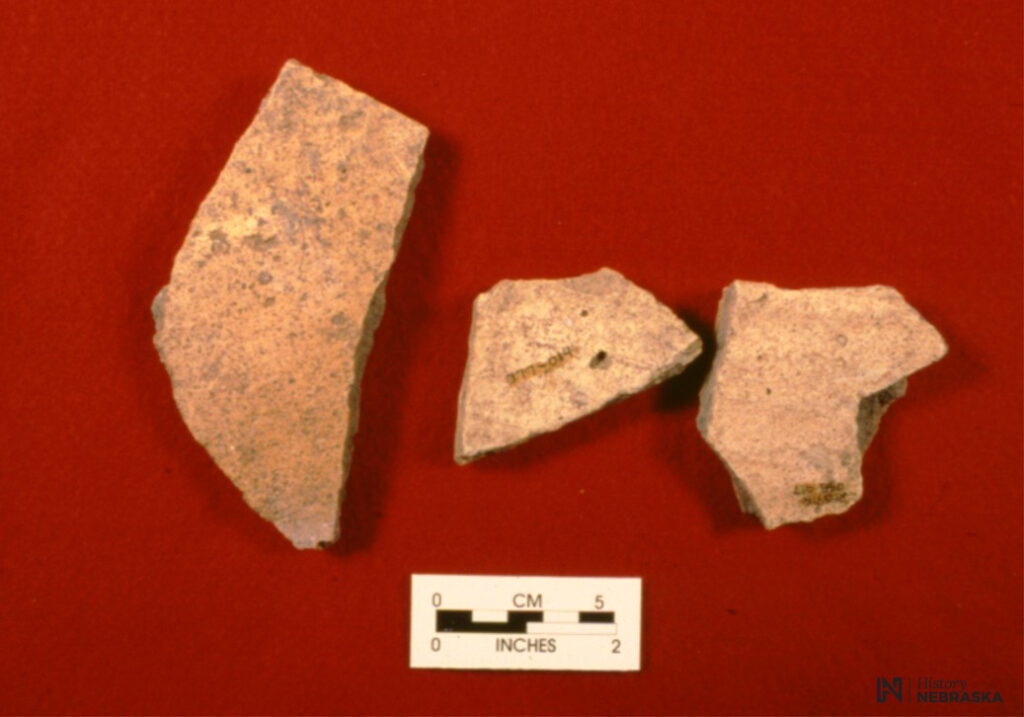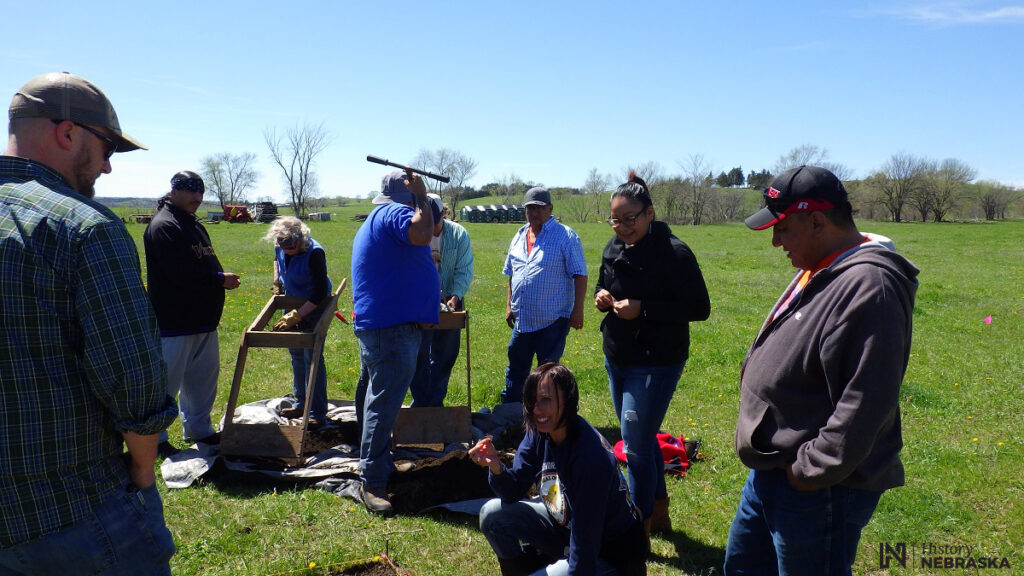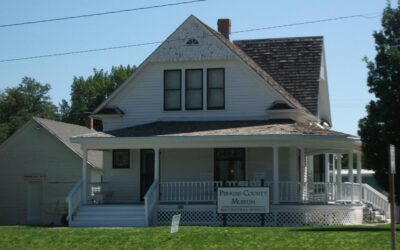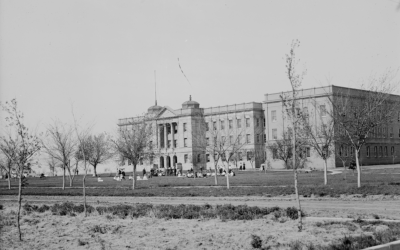While Nebraska is known for its remarkable record of Pawnee archeology, the state also is home to an important archeological record of tribes known collectively as Sedentary Siouans. The term ‘Siouan’ refers to the broad Siouan linguistic family (Chiwere and Dhegihan dialects) not specifically the nomadic Lakota of the High Plains including western Nebraska. The Siouan-speaking tribes discussed here include the: Omaha, Ponca, Oto, Ioway, and Missouria and unlike their very distant nomadic Lakota relatives, these tribes lived in large earthlodge villages in eastern Nebraska and practiced a sedentary lifeway featuring maize agriculture.
The Pawnee deep history is from the south while the Siouan deep history is linked to the ancient cultures of the Great Lakes and the Mississippi and Ohio river valleys. The earliest evidence of these people in Nebraska is the appearance of several large villages of the Oneota culture near Rulo, Ashland, Stanton, and Genoa in the 1200s. Oneota is widespread in Iowa, and portions of Minnesota, Missouri, and Illinois and the Nebraska communities are the western-most extent of the culture. During this time, it is not possible to determine which of the Sedentary Siouan tribes lived in these towns but these people appear to have retracted back to the east by 1400 and did not return for three centuries.
Shortly after 1700, the Omaha and Ponca (then a single tribe) appear in northeast Nebraska and the Oto established towns in the lower Platte valley between Fremont and Bellevue. The Ioway were also living in western Iowa but likely were in close association with the Oto and had some residency in eastern Nebraska. These tribes seem to have rapidly adopted many characteristics of the Pawnee who had already been living a short distance to the west. Some of the pottery form and decoration is identical to Pawnee and their relatives in South Dakota, the Arikara. Most significantly was adoption of earthlodge construction by the Siouans but they continued to also build traditional midwestern-style bark-or grass/reed-covered structures. The Missouria tribe joined the Otos in the 1790s and some of the Winnebago moved near the Omaha in the 1860s.
Several large earthlodge towns have become the focus of archeological work including those near Homer, Bellevue, Verdel, and Yutan. This work has resulted in a clearer understanding of the technology, architecture, subsistence and lifeways of these tribes and the nature of contact with European and American explorers, military and settlers. Today, the descendants of these tribes own reservations in Nebraska, Kansas, Oklahoma, and Wisconsin. History Nebraska archeology staff have been working with various tribal leaders and historic preservation staff on repatriation of human remains and preservation of ancestral sites.
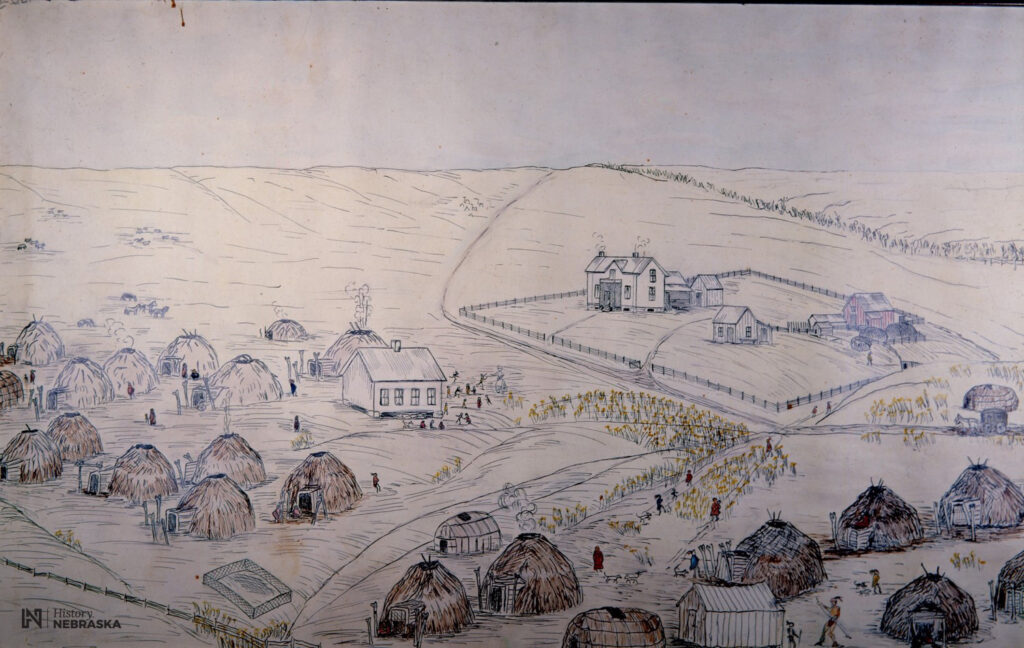
Mid-nineteenth century Oto-Missouria village near Barneston. Note what appears to be a bark-covered structure along the center right of the painting.
Further Reading
Carlson, Gayle F. and John R. Bozell (eds.)
2010 The Eagle Ridge Site and Early Eighteenth Century Indian-European Relations in Eastern Nebraska. Central Plains Archeology Volume 12(1).
O’Shea, John M. and John Ludwickson
1992 Archeology and Ethnohistory of the Omaha Indians: The Big Village Site. University of Nebraska Press. Lincoln.
Wood, W. Raymond
1993 Na‘nza. The Ponca Fort. J and L Reprints in Anthropology Volume 44. Lincoln.

